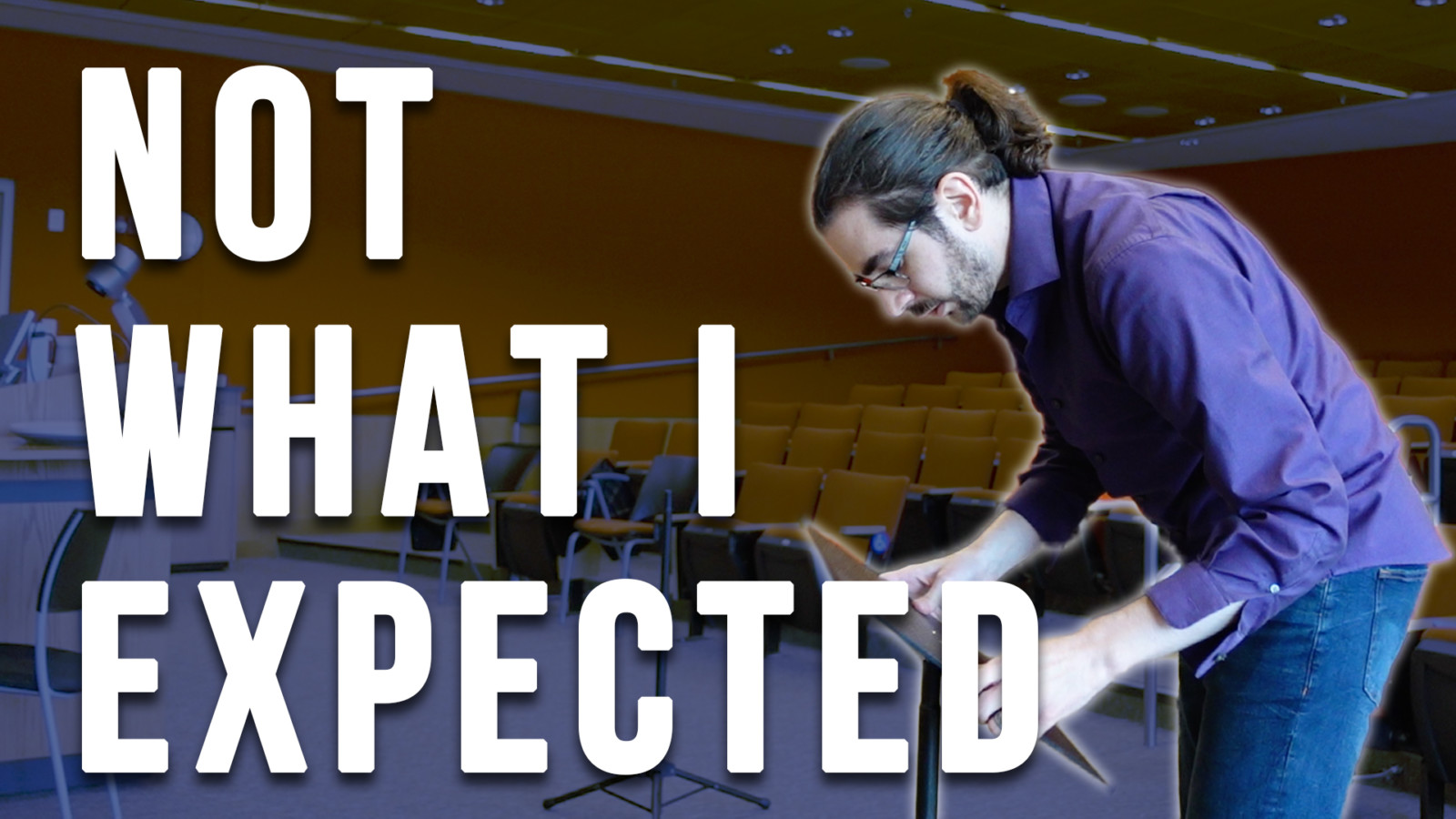Originally published at HumanConnection.blog
I recently worked two events for living, breathing audiences in the real world.
It was wild.
Since March 2020 I’ve been virtual, from keynotes on the human connection revolution, to communication workshops for corporate teams and non-profits, to leadership retreats for students, to family-friendly magic shows.
What was once unknown territory – Is it even possible to engage an audience from a webcam? – became my bread-and-butter.
Not only could I engage from afar, but I could enchant, delight, inspire, and provoke real change, all the while spending quality time with my pregnant wife and subsequently my firstborn son.
The pandemic taketh away, but in many ways, the pandemic giveth.
I became so comfortable with my new life that I started to wonder if I’d ever go back on the road, or if I’d even want to?
And then out of nowhere, vaccines rolled out in the U.S so effectively and efficiently that requests for in-person events spiked. In April 2021 my inbox flooded with inquiries to rejoin the real world as early as June, and I had to make a decision:
Do I want to stick to this new virtual world and willingly give up new opportunities in the career I’d previously worked so hard to cultivate?
Or do I dip my toe back in the water and risk falling face-first into the deep end?
I went face-first.
3 Lessons
Both of these events were straight-forward magic shows. Both events were a big success in a number of ways. However, neither show was my finest work. Neither event was totally smooth.
But I’m a big believer in learning anything I can from every experience I have, so here are my top 3 takeaways.
1. People are Desperate for Human Connection
There was SO much energy and excitement around the fact that we were actually hanging out.
My favorite aspect of both events was having people come up to me before and after the show to chat. Those are the extra moments sorely missing from most virtual experiences, where the medium dictates that we blip in and out of existence instantaneously at the click of a mouse.
I was in my element having “nothing conversations” during load-in, set-up, and tear-down. So too did audience members with each other.
Like riding a bike, I found myself taking advantage of the opportunity to make connections with a subset of the audience even before starting the show, by asking about their hobbies or interests, hopes and dreams, or complimenting their shirt or hat.
Lesson 1: Small-talk isn’t so small, after all. Don’t be afraid to talk about the weather, the traffic, or your new shoes as you readjust to socializing. Anything that gets you into a conversation is a step towards true connection.

To learn 7 foolproof ways to start a conversation with anyone (without looking like an idiot), grab our free resource here.
2. Attention Spans are Abysmal
This was a problem well before COVID, to be fair. The previous 20 years of digital revolution did a number on our ability to focus, across all generations.
But after 18 months of isolation and virtual-only experiences, focused attention has noticeably atrophied even from its lackluster pre-pandemic state. One 2020 study reported that 99% of people admit to multitasking during video meetings.
That’s a problem. Frequent multitasking is associated with depression, social anxiety, and trouble reading human emotions.
We all just spent 18 months doing multitasking all-day, every day, so it’s no surprise that our ability to focus has disappeared. To be clear, I don’t believe this is a teen or Gen Z problem.
It’s a human problem.
Even as a magician I found myself losing the attention of my audience every single moment there wasn’t an active trick or joke. There was no tolerance for storytelling, banter, or even delivering instructions critical to the magic trick.
We are at a crossroads. Do we cater to nonexistent attention spans by stripping all of our communication down to bullet points and sound bytes, or do we work together to redevelop the skill of focused attention?
I choose the latter, but that means I’ll have to be prepared to be frustrated for a while.
Lesson 2: If you want others to give you their undivided attention, lead by example. Put your phone away, turn off your notifications, and drop everything else you’re doing when a friend, colleague, or loved one wants to talk. Demand more from yourself than you do of others, but also be patient. We have a long road to recovery.
3. “Anything in-person is better than virtual, no matter the conditions.”
It seems that after so much time spent as avatars trapped in a rectangle (inside another rectangle inside another rectangle…), ANYTHING in the “real world” is better by default, right?
That’s what I’m hearing from both event organizers and audiences. No matter how difficult the conditions are to safely host an in-person event, it’s still better than Zoom.
I’m not convinced.
And honestly, I’m not sure many people are. Recent studies indicate that 73% of employees want flexible remote work options to stay. We might say we want everything to come back, but do we really? Or are we all just afraid to admit the silver lining to an otherwise devastating year in human history?
Simply sharing the same physical space as someone else does not make it a meaningful experience. That was never the case.
It has always been about intention and attention.
When you’re debating hosting an event in-person versus virtually, you need to answer one question first:
What is the event for, efficiency or collaboration?
If it’s for efficiency, you should almost definitely make it virtual.
If collaboration, then a follow-up question: Will the conditions of your in-person event aid or prevent collaboration?
Lesson 3: We need to be very clear why we’re hosting an event and if the conditions of that event make us more or less likely to succeed. Choose the medium – in-person or virtual – based on the goals of the event and the needs of the people, not how it feels at a gut level.
The Pivot Back: 3 Questions
Over the next few months my schedule is completely bonkers.
An in-person magic show one day, two virtual speaking engagements the next. An in-person speech the next week, two virtual workshops, a virtual magic show, and four coaching calls the rest of that week.
What I still love about virtual:
- Time, money, and energy efficiency.
- Work-life balance.
- Total control over the environment.
- More equitable for non-traditional students and employees to attend events.
What I still love about in-person events:
- Before-and-after tidbits of curiosity and connection.
- Interruptions and distractions often make the most memorable moments.
- The messiness of gathering in the “real world” makes us more likely to invest fully in the experience.
I asked my friend and colleague Carolene Méli to weigh in. Carolene is an Experience Strategist who previously spent 10 years with Cirque du Soleil as the Head of VIP Events & Concierge.

Here’s her take:
“When creating events, there is always a tendency to start with the exciting part – the activities, the speakers, the guest list. It is so easy to throw ideas up in the air and get carried away in the creation process. But what gets lost amongst all of that commotion is purpose – the reason the event is being created in the first place. and the driving force behind each ensuing moment of connection.
Purpose comes first. Always. But instead, it often gets sprinkled on as an afterthought or included somewhere along the way just to tick off a company mandate.”
Ultimately, the questions for all event organizers, meeting planners, and company leadership are the same:
- What is the purpose of this experience?
- Do our attendees understand the purpose of this experience?
- Will the conditions make it more likely we are successful in achieving the end goal of this experience?
Yes, we are excited to be “hanging out” again. And yes, I’m pumped to be in front of living, breathing people on a stage, feeling the energy of the room, riding the waves of laughter and the tension of silence.
But now that we have 18 months of practice in virtual experiences, let’s not have our excitement get away from us. “In-person” is finally an option again, but it’s only one option.


